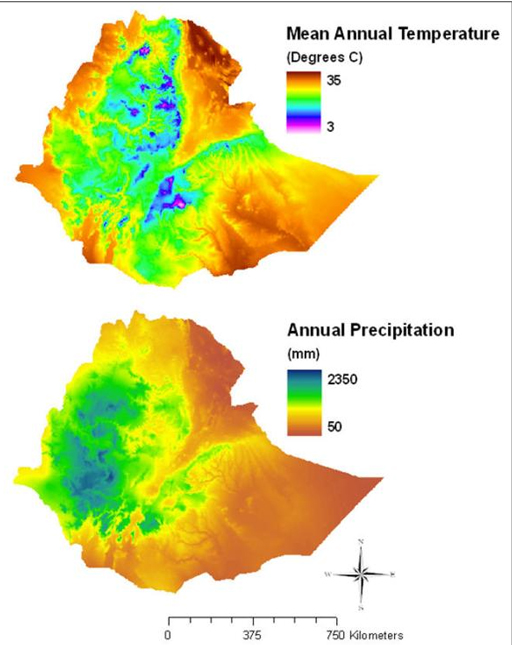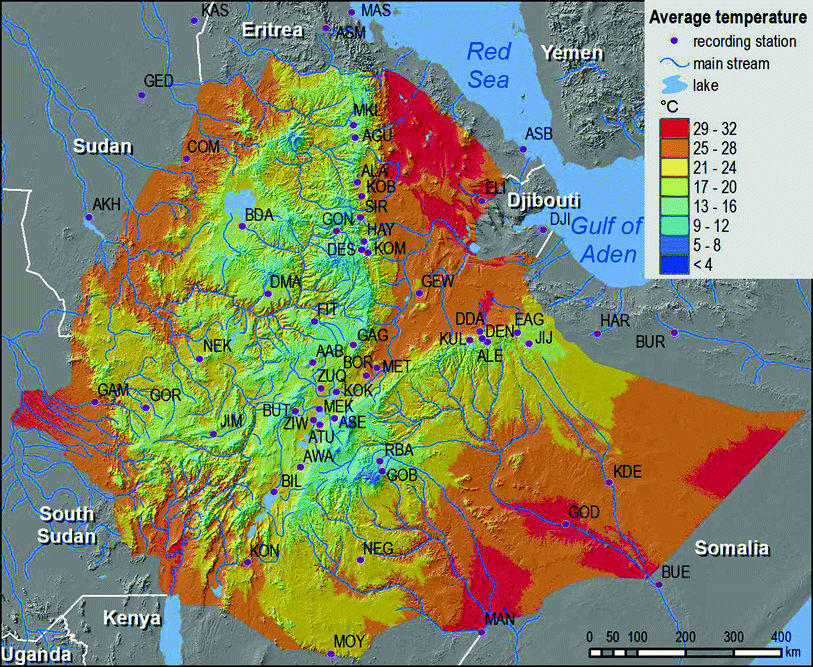Climate Map Of Ethiopia
But not only that with higher elevations the winds get pushed up and clouds are being formed which further lowers the temperatures in daytime. For every 1000 m the temperature drops about 6 5 degrees celcius.
 Koppen Climate Classification Map Of Ethiopia 1900 1900
Koppen Climate Classification Map Of Ethiopia 1900 1900
However the coldest month is not always in bega and the hottest month is not always in kiremet.
Climate map of ethiopia
. Elevation is an important element in determining the climate of ethiopia. There are a season characterized by scarce rains from november to february and a rainy season from june to september preceded by a period from march to may when some showers and thunderstorms may occur in the afternoon. The average seasonal temperatures are. It has three different climate zones according to elevation.The length of days and nights are almost the same in most regions. Autumn tibe september november. The capital is addis ababa new flower located almost at the centre of the country. Tropical rainy climate dry climate and warm temperate rainy climate.
Winter bega december february and spring belg march may. Mean maximum and mean minimum temperatures vary spatially and temporally. Over the greater part of ethiopia as well as the oromia highlands the climate is very healthy and temperate. Summer kiremet june august.
However in the deep valleys of the tekezé and abay and generally in places below 1 200 m 3 937 ft the conditions are tropical and diseases such as malaria are prevalent. Ethiopia country on the horn of africa. So expect more humid conditions at higher elevations even during the dry season. Climate ethiopia is in the tropical zone laying between the equator and the tropic of cancer.
The lowest mean minimum temperature mostly occurs over the highlands of the country. Ethiopia lies near the equator where maximum heat from the sun is received. This climatic range is further subdivided into three climate zones based on altitude. Kolla tropical zone is below 1830 metres in elevation and has an average annual temperature of about 27 degree celsius with annual rainfall about 510 millimetres.
On the ethiopian plateau the zone 1 on the map the weather can be cool mild or pleasantly warm depending on altitude. Due to the country s proximity to the equator and it s largely diverse topography ethiopia experiences varied conditions of climate that range from almost freezing temperatures of near 0 c to very hot very arid temperatures that could reach up to 50 c. Ethiopia is the largest and most populated country in the horn of africa. Ethiopia has 7 distinct ecological regions with different climate conditions as can be seen on the map on the left.
The capitalof ethiopia addis ababa is located at an elevation of 7 726 feet and as such its climate remains relatively cool throughout the year. In ethiopia traveling from one area to another can mean shifting from 60 degrees fahrenheit 15 degrees celsius to 95 degrees fahrenheit 35 degrees celsius in a matter of hours. The country lies completely within the tropical latitudes and is relatively compact with similar north south and east west dimensions. Most of the highlands experience mean minimum.
Ethiopia has four major seasons. Generally mean maximum temperature is higher from march to may and mean minimum temperature is lower from november to december as compared to other months. There are three principal climate groups in ethiopia.
 3 Spatial Variability Of The Mean Annual Rainfall In Ethiopia
3 Spatial Variability Of The Mean Annual Rainfall In Ethiopia
File Koppen Geiger Map Eth Present Svg Wikimedia Commons
 Olcreate Contextenvt 1 0 Study Session 9 Introduction To Climate
Olcreate Contextenvt 1 0 Study Session 9 Introduction To Climate
 Place Climate Geografia
Place Climate Geografia
 1 Traditional Climatic Zones Of Ethiopia Download Scientific Diagram
1 Traditional Climatic Zones Of Ethiopia Download Scientific Diagram
 File Ethiopia Climate Map Jpg Wikimedia Commons
File Ethiopia Climate Map Jpg Wikimedia Commons
 Water Free Full Text Climate Change Impact On Water Resources
Water Free Full Text Climate Change Impact On Water Resources
 The Climate Map Of Ethiopia Ethiopia Climates Map
The Climate Map Of Ethiopia Ethiopia Climates Map
 The Climate Of Ethiopia Springerlink
The Climate Of Ethiopia Springerlink
 Ethiopia Weather By Month Climate Zones
Ethiopia Weather By Month Climate Zones
Nr505 About Us
Post a Comment for "Climate Map Of Ethiopia"